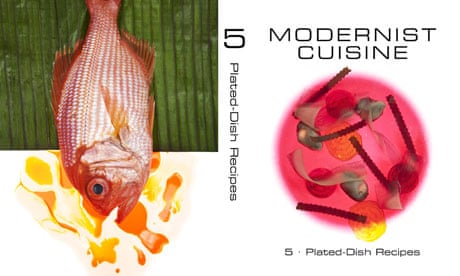Got a spare 30 hours and £395 burning a hole in your pocket? If so, you might want to place an order for Nathan Myhrvold's six-volume cookbook, published in the United States today, and spend the time creating his Mushroom Swiss burger.
At 2,438 pages, and apparently weighing more than 18kg (40lb), his Modernist Cuisine: The Art and Science of Cooking could be the heaviest – and most ambitious – recipe book ever sold.
Myhrvold, the former chief technology officer at Microsoft, was inspired to create the culinary colossus in 2004 after discovering that a cooking technique called sous-vide – which uses vacuum-sealed bags to cook food in water under very controlled temperatures – was not widely available. In response, he decided "to create a comprehensive book that covered modernist cuisine in terms of history and recipes, science and technique".
Highlighting developments spearheaded over the past 20 years by such forward-thinking chefs as El Bulli's Ferran Adrià and Heston Blumenthal, the book outlines the equipment (such as test tubes) and step-by-step maths and science techniques readers will need to recreate optimum cooking conditions in their own kitchen.
It took 36 people four years to put together the contents in Myhrvold's Seattle-based Cooking Lab, using recipes from chefs both dead and alive. But despite its size it doesn't include any pastry or baked dessert recipes (Myhrvold hints that he is saving that for a second book). And with some recipes requiring liquid nitrogen, critics have unsurprisingly argued the ingredients, tools and techniques are inaccessible to most people. But Myhrvold insists: "Eighty per cent of the recipes in the book can be made with the utensils that you can find in a shopping mall kitchen store. The other 20% is more exotic stuff but . . . even if you don't want to cook with liquid nitrogen at home, for example, it's still interesting to see how you would use it."
And he remains unrepentant: "This book is for people who really love food. The point of it is to be an encyclopedic reference that, in a self-contained way, explains the key techniques of 21st-century cooking and if you're not looking for that, then there are a million other cookbooks in the world."
